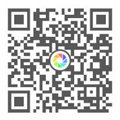
NEWS
The Power of Child Reading Pens: A Smart Tool for Early Learning
In the rapidly evolving world of educational technology, child reading pens have emerged as a significant tool for enhancing literacy and learning among young children. Designed to support early readers, these innovative devices are not just gadgets but reliable companions in a child's educational journey. Here's a closer look at how child reading pens work and the advantages they offer.
Child reading pens function by using advanced optical character recognition technology. When a child points the pen at a word or text in a book, the pen reads aloud the word or sentence. This feature is particularly beneficial for early readers who may struggle with pronunciation or understanding basic vocabulary. By hearing the correct pronunciation, children can learn to read more independently and confidently.
One of the key benefits of using a child reading pen is its ability to engage young learners. The interactive nature of these devices captures children's attention, making reading a fun and enjoyable activity rather than a chore. Many child reading pens come equipped with various features such as audio stories, songs, and games, further enriching the learning experience and making literacy more dynamic.
Moreover, child reading pens promote self-paced learning. Children can control the pace at which they read, allowing them to revisit challenging words or passages as needed. This flexibility supports a personalized learning experience, catering to different learning styles and needs. For parents and educators, this means that children can take charge of their learning, fostering a sense of independence and responsibility.
In addition to enhancing reading skills, child reading pens can also support language development and comprehension. Many models offer features that allow children to listen to explanations of difficult concepts or vocabulary, thereby deepening their understanding of the material. This multi-sensory approach to learning addresses various aspects of literacy, including listening, speaking, and reading skills.
Furthermore, child reading pens can alleviate the pressure often associated with learning to read. When children engage with these devices, they can explore books at their own pace without the fear of making mistakes in front of peers or adults. This supportive environment encourages a love for reading and learning, which is crucial for lifelong educational success.
In conclusion, child reading pens serve as a valuable tool in the realm of education technology. By combining interactive features, audio support, and personalized learning experiences, these devices can significantly enhance literacy skills and foster a love for reading in young children. As parents and educators seek effective ways to support early literacy, child reading pens present an exciting option worth considering.
Child reading pens function by using advanced optical character recognition technology. When a child points the pen at a word or text in a book, the pen reads aloud the word or sentence. This feature is particularly beneficial for early readers who may struggle with pronunciation or understanding basic vocabulary. By hearing the correct pronunciation, children can learn to read more independently and confidently.
One of the key benefits of using a child reading pen is its ability to engage young learners. The interactive nature of these devices captures children's attention, making reading a fun and enjoyable activity rather than a chore. Many child reading pens come equipped with various features such as audio stories, songs, and games, further enriching the learning experience and making literacy more dynamic.
Moreover, child reading pens promote self-paced learning. Children can control the pace at which they read, allowing them to revisit challenging words or passages as needed. This flexibility supports a personalized learning experience, catering to different learning styles and needs. For parents and educators, this means that children can take charge of their learning, fostering a sense of independence and responsibility.
In addition to enhancing reading skills, child reading pens can also support language development and comprehension. Many models offer features that allow children to listen to explanations of difficult concepts or vocabulary, thereby deepening their understanding of the material. This multi-sensory approach to learning addresses various aspects of literacy, including listening, speaking, and reading skills.
Furthermore, child reading pens can alleviate the pressure often associated with learning to read. When children engage with these devices, they can explore books at their own pace without the fear of making mistakes in front of peers or adults. This supportive environment encourages a love for reading and learning, which is crucial for lifelong educational success.
In conclusion, child reading pens serve as a valuable tool in the realm of education technology. By combining interactive features, audio support, and personalized learning experiences, these devices can significantly enhance literacy skills and foster a love for reading in young children. As parents and educators seek effective ways to support early literacy, child reading pens present an exciting option worth considering.
RELATED NEWS











